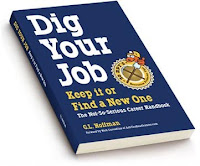By Mark Feeney
Boston GlobeJohn Updike, a two-time winner of the Pulitzer Prize for fiction, whose jeweled prose and quicksilver intellect made him for decades one of America's foremost literary figures, died yesterday. He was 76.
Mr. Updike, a longtime resident of Beverly Farms, died of lung cancer at Hospice of the North Shore in Danvers, said his wife, Martha.
"He was obviously among the best writers in the world," said David Remnick, editor the New Yorker, Mr. Updike's literary home for more than half a century.

A master of many authorial trades, Mr. Updike was novelist, short story writer, critic, poet - and in each role as prolific as he was gifted. He aimed to produce a book a year. Easily meeting that goal, Mr. Updike published some 60 volumes. The first was a collection of poems, "The Carpentered Hen" (1958). "My Father's Tears and Other Stories" is to be published in June.
Mr. Updike combined diligence with brilliance. Few writers have staged such elegant lexical ballets on the page. "The scrape and snap of Keds" fill "the moist March air" in the opening of Mr. Updike's second novel, "Rabbit, Run" (1960). Thirty years later, in "Rabbit at Rest," something as mundane as angina becomes "that singeing sensation he gets as if a child inside him is playing with lighted matches."
Mr. Updike could be brilliant even about his own diligence, writing in his memoir "Self-Consciousness" (1989) of "my ponderously growing oeuvre, dragging behind me like an ever-heavier tail." Or there was the description of Fenway Park, "a lyric little bandbox of a ballpark," in Mr. Updike's classic account of Ted Williams's final game, "Hub Fans Bid Kid Adieu."
It was Mr. Updike's boyhood attachment to Williams, as well as access to area beaches, that brought the Pennsylvania native to the North Shore, in 1957. He lived north of Boston the rest of life: first in Ipswich, later in Georgetown and, for the past three decades, Beverly Farms.
Mr. Updike long ago became a monument on the literary scene, so much so that in 1991 the novelist Nicholson Baker could devote an entire book to his fascination with him, "U and I." Yet what seemed monumental and effortless to readers didn't necessarily feel that way to Mr. Updike.
Continue here....
 It will take a while, of course, for us to grasp the significance of the events of this year, but some of the best books of 2008 provide a clearer understanding of the serious issues that confront us, from wars to financial woes. Many of the books also remind us, in these challenging times, of what is most valuable in life: family, friends, community.
It will take a while, of course, for us to grasp the significance of the events of this year, but some of the best books of 2008 provide a clearer understanding of the serious issues that confront us, from wars to financial woes. Many of the books also remind us, in these challenging times, of what is most valuable in life: family, friends, community.













